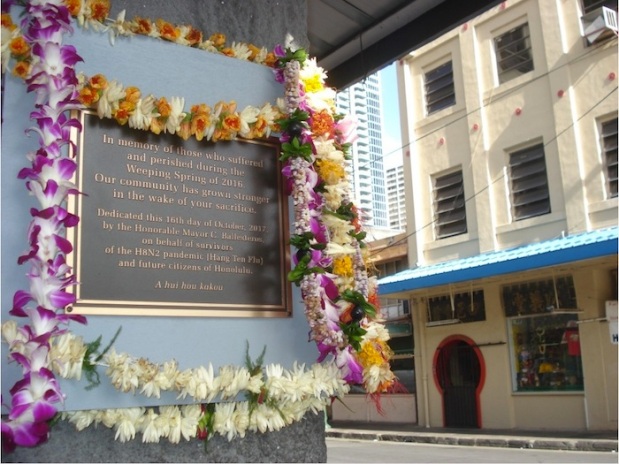
A very different approach is advocated in the course summary for the University of Hawaii’s Underground Futures Studies degree*: ‘Guerilla Futures: systematically picture how alternative worlds could unfold; manifest your own visions playfully and compellingly in a range of media; and make these narratives available in the real world, via live urban interventions for unsuspecting audiences to encounter.’
The result of these Guerilla Futures projects often include street art referencing events that haven’t happened yet, installations in public spaces (often including ‘future artifacts’) and occasionally, monuments to future tragedies or achievements.
Along similar lines are the Blue Line Projects, which have been carried out in various cities around the world. The execution varies but the core idea is quite simple: a blue line is traced (using chalk, or paint, or tape, or sometimes projected) through the streets of the city, showing where sea level is expected to be by the end of the century if global warming continues.
Where they have sought city approval, these projects have often experienced severe backlash from real estate developers, property councils and other businesses who may suffer financially if waterfront properties are perceived to be less permanent. However, the simplicity of the project means that it can be carried out with virtually no resources and planning by community groups and activists.

In one such example in Santa Barbara, where the property council’s aggressive reaction resulted in the community group being refused permission for the project, anonymous activists protested the decision by drawing the line anyway. The end result, thanks to the controversy and public debate, was that the population of Santa Barbara became significantly more aware of the implications of sea level rise for their city.
The immediacy of this kind of work for the viewer really captures some of the essence of the Experiential Futures tag. Though the nature of guerilla art means that most passers-by do not engage with it, those that do engage will experience these ideas in a very unusual context, and the simple fact of their surprise may stimulate them to reflect on and consider these ideas more thoughtfully than if they had read them in a book or seen them in a TV documentary.
*Now also, I’m pleased to see, being offered at OCAD University in Toronto, by none other than Stuart Candy.